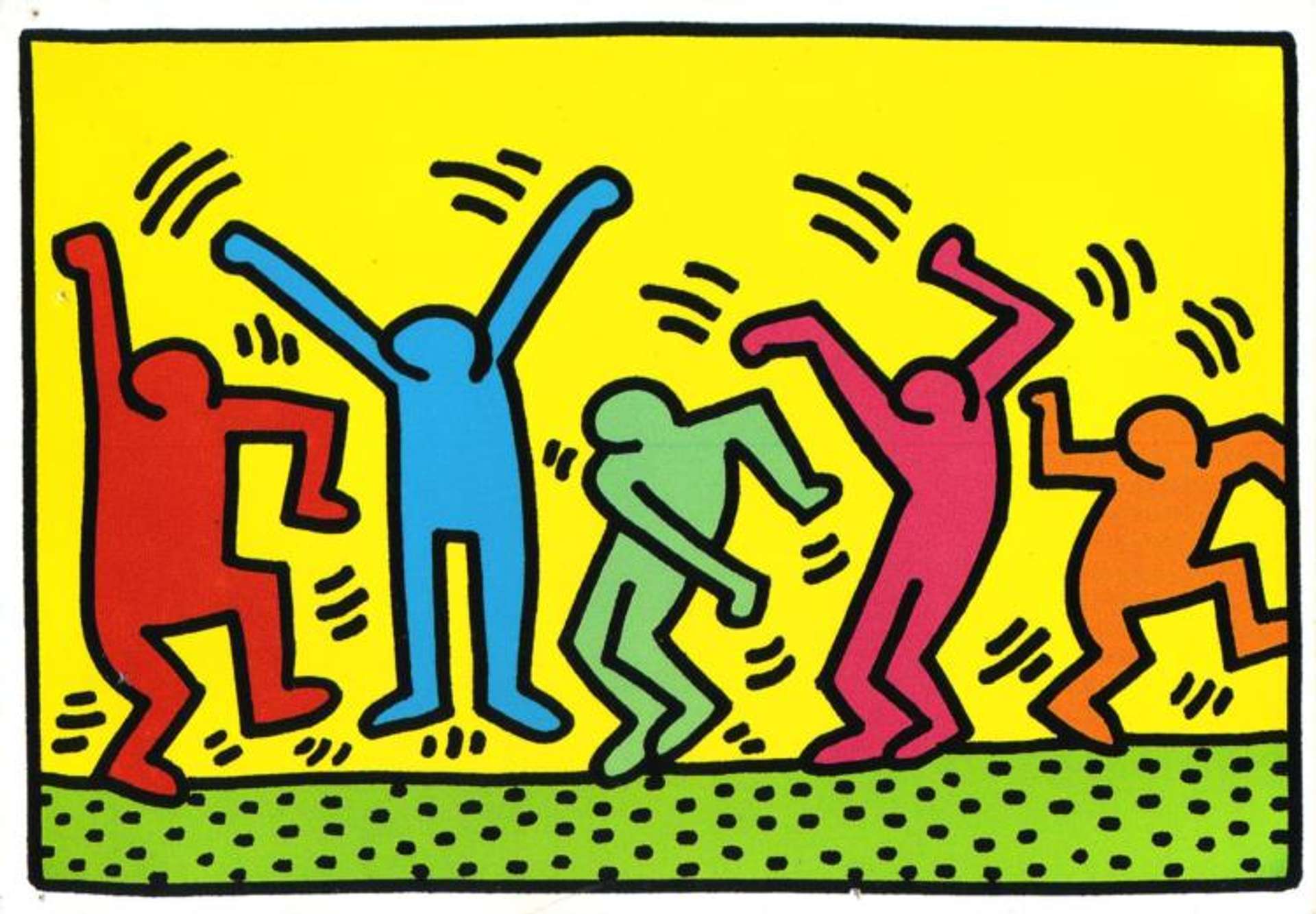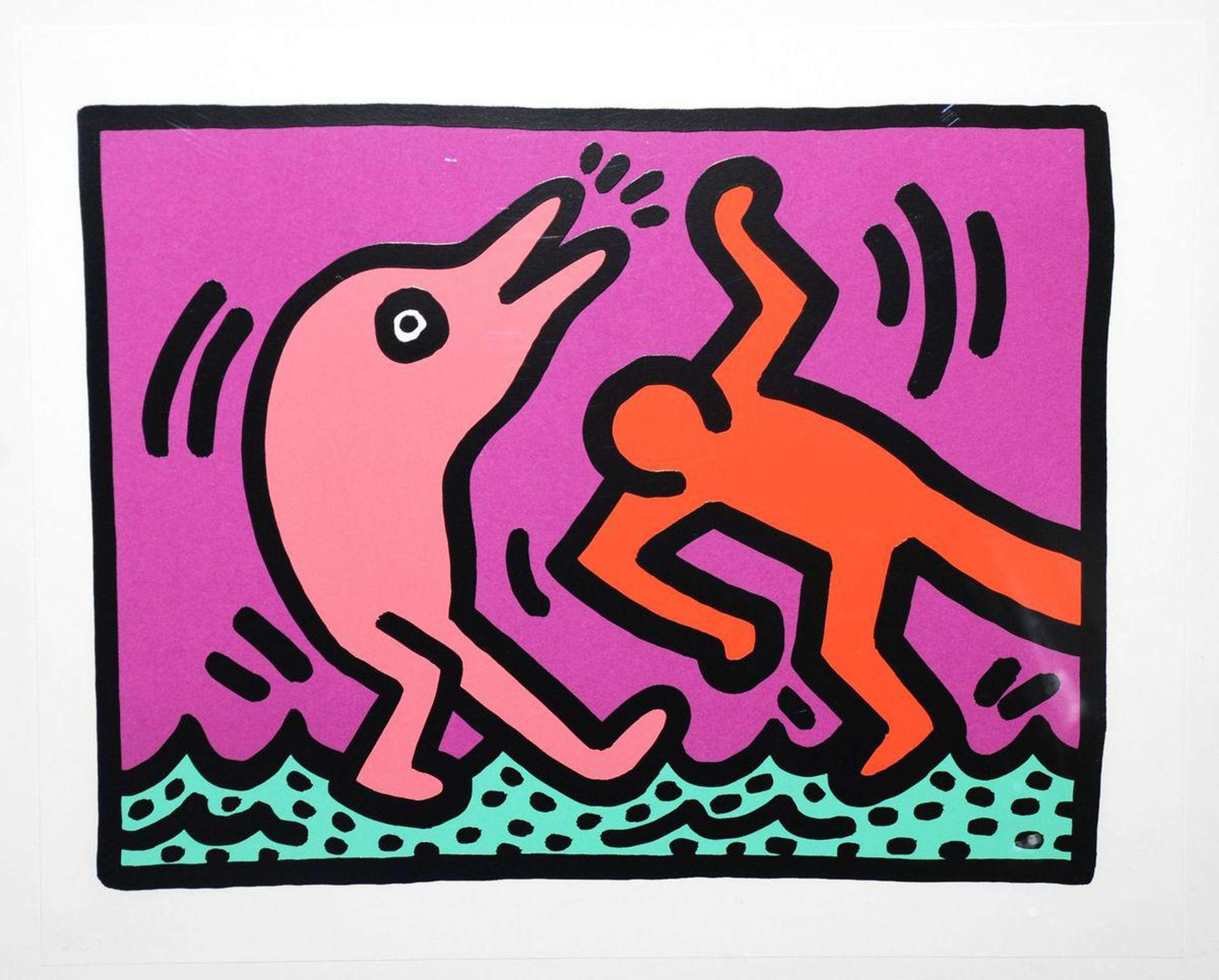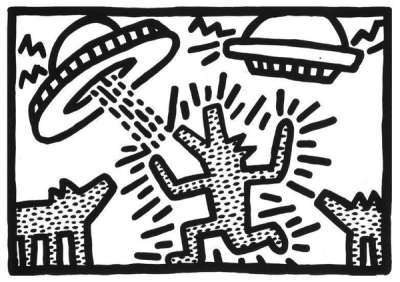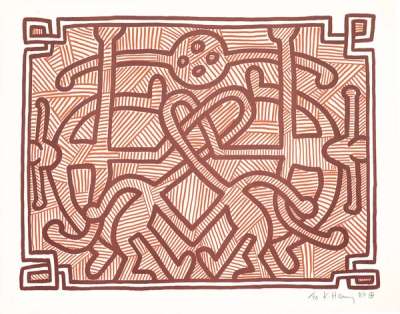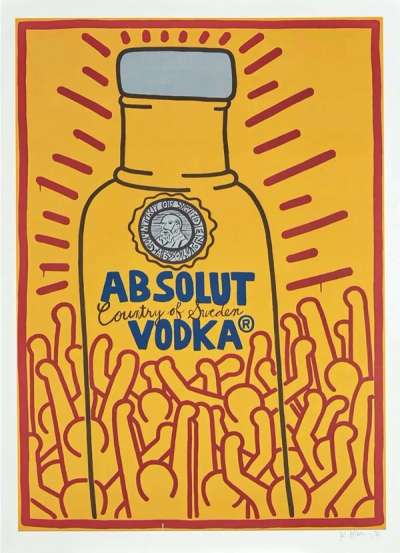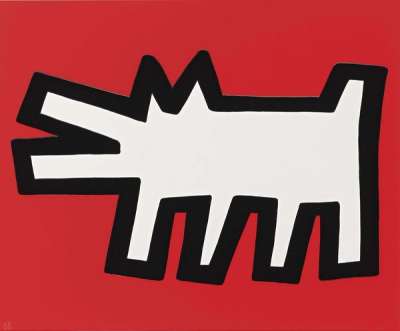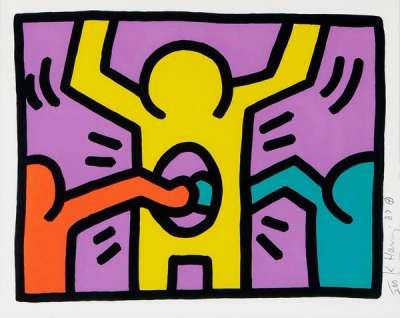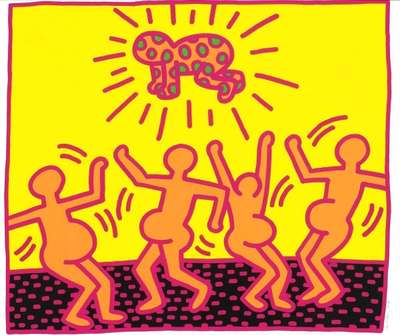Beyond Pop Art: Exploring Keith Haring’s Lesser-Known Sculptural Works

 Image © Flickr / Untitled (Figure Balancing on Dog) © Keith Haring 1986
Image © Flickr / Untitled (Figure Balancing on Dog) © Keith Haring 1986
Keith Haring
250 works
Keith Haring's progression from graffiti to sculpture marked a pivotal shift in Pop Art, emphasising his influence as a pioneering artist. His venture into sculpture extended beyond his renowned two-dimensional works, embedding socially engaged themes within interactive public installations. By blending art with activism, Haring engaged global audiences and set new standards in contemporary art. His innovative approach, integrating style and substantive content, has significantly impacted the course of modern art, illustrating art’s potential as a tool for societal commentary and transformation.
The Sculptural Side of Haring: Unveiling the Third Dimension
Haring’s sculptures are an extension of his visual language, yet they offer a fresh perspective on his beloved themes. The transition from flat surfaces to wood and steel sculptures allowed Haring to experiment with form, structure, and the interaction of his art with its environment. His sculptures often feature his signature motifs—barking dogs, dancing figures, and abstract characters rendered in bold, dynamic shapes that invite viewers to engage with them.
This sculptural journey reflects Haring's never ending quest for artistic evolution and his desire to make art more accessible as well as interactive. Haring’s sculptures, often placed in public spaces, broke down barriers between art and the audience, inviting virtually anyone to view and actively participate with his art. By stepping into this medium, Haring expanded the reach of his practice, creating immersive experiences that resonate with the vibrancy and ethos of his more familiar two-dimensional works.
 Image © Mercedes-Benz Art Collection / Untitled (Boxers) © Keith Haring 1987
Image © Mercedes-Benz Art Collection / Untitled (Boxers) © Keith Haring 1987Transition from Canvas to Sculpture: Haring's Artistic Evolution
Haring's foray into sculpture began in 1981, a pivotal year that saw the transformation of his dynamic two-dimensional imagery manifested into rhythms of movement and dance. Haring perfectly executed the visual translation of his graffiti subway art into sculpture with the debut of his marked drum, Untitled.
By 1985, Haring's sculptural language had evolved, and his iconic barking dog, previously seen throughout his oeuvre was reborn in an encaustic on wood sculpture. In the years leading up to 1990, Haring continued to expand his repertoire in works like Altarpiece that showcased his proficiency in diverse materials and techniques. These pieces often featured a combination of masks, instruments, and dancing figures, all springing to life from his original Pop Art creations. The integration of these elements in his sculptures represented a fusion of Haring's artistic roots with his evolving vision, where the static became dynamic, and the two-dimensional leaped into the three-dimensional.
 Image © Flickr / Untitled (Dancing Figures) Version C © Keith Haring 1989
Image © Flickr / Untitled (Dancing Figures) Version C © Keith Haring 1989The symbolism and themes in Keith Haring's sculptural art
Central to his sculptural body of work is a profound engagement with core experiences, vividly encapsulating motifs of love, unity, and the interconnectedness of society. The interlocking and intertwined forms of his figures offer a powerful reflection on the human condition, promoting a sense of empathy, inclusivity, and mutual understanding.
Beyond these universal themes, Haring's sculptures are also powerful mediums for social and political discourse, reflecting his deep commitment to activism. Through his three-dimensional art, he boldly addressed contemporary issues such as the HIV/AIDS crisis, LGBTQ+ rights, and various forms of social injustice. His sculptures thus served as platforms for initiating conversations and raising awareness about important societal concerns, pushing the boundaries of art as a tool for real-world impact.
Icons in Three Dimensions: Continuity and Departure in Haring's Imagery
Haring's sculptures maintain a strong continuity with his trademark visual style. The bold lines, dynamic figures, and symbolic motifs integral to his two-dimensional works, find new life in sculpture. These iconic elements, now in three dimensions, gain a physical presence and an ability to interact with viewers and the environment in a more direct and tactile way.Yet, there is a distinct departure in how these motifs are expressed. In sculpture, Haring's icons are not confined by the boundaries of a canvas.
They occupy a significantly larger space, casting shadows, and engaging with the viewer from multiple angles. This spatial freedom allows Haring to explore scale, perspective, and context in novel ways, offering fresh interpretations of his well-known themes. Through this blend of continuity and departure, Haring's sculptural works achieve a unique balance. They remain instantly recognisable as his creations while demonstrating an evolution of his visual process.
 Image © Carnegie Museums of Pittsburgh / Untitled (Elephant) © Keith Haring 1985
Image © Carnegie Museums of Pittsburgh / Untitled (Elephant) © Keith Haring 1985Sculpture as Activism: The Role of Haring’s Three-Dimensional Art
Analysing Apartheid In Different Mediums
Keith Haring's 1985 Untitled (Elephant) sculpture exemplifies the blend of continuity and departure within his sculptural work. This piece, featuring a predominantly monochromatic paper mache elephant with distinct red tusks, is adorned with characters in Haring’s quintessential style. The choice of medium and scale in this sculpture marks a significant departure from his usual portfolio. Unlike his typical works, the application in this sculpture is distinct both in terms of the materials used and its size.
This specific composition, especially considering its time frame, shares a kinship with Haring's Free South Africa suite, a collection that poignantly highlighted the conflicts during Apartheid. The similarity lies not just in the visual style but also in the thematic undercurrents. With this elephant sculpture, Haring continues to explore themes of social and political significance, yet the context is refreshingly different. The familiar narrative content from his previous works is recontextualised in a new format, showcasing Haring's ability to maintain thematic consistency while venturing into new artistic mediums.
This piece stands as an exemplary demonstration of Haring's evolution. It retains the essence of his iconic imagery, yet diverges in its physical manifestation, illustrating how Haring's art was continually evolving and adapting, while still remaining true to its core principles and messages.
Public Spaces and Sculptural Installations: Haring’s Urban Legacy
Haring's Self-Portrait was displayed in 2007 at the Arsenal in Central Park. This exhibition, part of a larger retrospective, The Outdoor Gallery: 40 Years of Public Art in New York City Parks, highlighted Haring's contribution to the transformation of public spaces into cultural landmarks. The sculpture, with its distinctive style, echoes Haring's commitment to making art accessible and engaging for a diverse audience.
Haring's work in public spaces often tackled themes of race, identity, and societal issues, using art as a tool for awareness and dialogue. His sculptures, while visually captivating, are rich with layers of meaning, inviting viewers to reflect on broader social narratives. This approach to art in public spaces has not only enriched urban environments but also challenged traditional notions of art's role in society. By integrating his work into the fabric of city life, Haring left an impression on the way art is perceived and experienced in the urban landscape, ensuring his artistic and social impact resonates well beyond the art market and into the realm of public consciousness.
 Image © Mural Arts Philadelphia / We The Youth, Keith Haring © Steve Weinik 2013
Image © Mural Arts Philadelphia / We The Youth, Keith Haring © Steve Weinik 2013Haring’s Sculptural Themes and Materials
Haring's venture into sculpture brought forth a fascinating interplay of varied materials and consistent thematic elements. His sculptures, birthed from materials like paper mache, aluminium and steel, translated his iconic visual language into a new, tangible form.
Haring’s use of metals, for instance, in works like his 1987 Untitled (Boxers), offered a nod to traditional sculptural techniques while infusing it with a modern, cartoonish twist. The painted steel retained the classic aesthetic, yet the form characterised by dynamic, almost animated figures was quintessentially Haring. His use of steel in public installations added a sense of permanence and resilience to his art, making it a part of the urban landscape.
Aluminium sculptures like Julia highlighted Haring's ability to work with industrial materials, bringing his street art sensibility into a more durable medium. The reflective quality of aluminium added another dimension to his work, creating elements of light and shadow.
While the materials varied, the themes in Haring's sculptures remained consistent with his broader oeuvre. His figures and symbols of radiant babies, barking dogs, dancing figures continued to explore themes of activism, social justice, and human connection. However, the choice of materials like wood and terracotta also paid homage to art history and cultural traditions, indicating a deeper appreciation and understanding of global artistic heritage. Through these materials, Haring not only showcased his technical versatility but also his respect for different cultural and historical art forms.
Haring's sculptural compositions often feature a playful yet thought-provoking arrangement of figures. He skillfully balances simplicity with complexity, allowing his iconic motifs to emerge with a new three-dimensional life. These sculptures, while retaining the essence of his graphic style, invite viewers to engage with his art in a more immersive, tangible way.
Incorporating works like Tongue Man into the analysis of Haring's sculptural techniques and composition further highlights his distinct approach to art-making. The piece features a figure with an exaggerated, protruding tongue, suggesting communication and expression–virtues Haring readily embraced.
Reassessing Haring’s Impact on Contemporary Sculpture
In reflecting upon Haring’s impact on contemporary sculpture, we uncover a narrative that intertwines artistic innovation with societal resonance. Haring's sculptural endeavours were not solely extensions of his canvas work, but statements that reshaped public perception of sculpture. His ability to meld the spontaneity of street art with the timelessness of sculpture challenged and expanded the boundaries of how art is experienced in public spaces.
Haring’s sculptural legacy is marked by an unyielding commitment to social and political discourse, a facet that makes his work perpetually relevant. His sculptures remain catalysts for conversation and platforms for activism.
As we reassess Haring’s sculptural contributions, we are reminded of art's power to transcend its physical form and become a living part of the community’s fabric. His sculptures, in their playful yet profound nature, continue to inspire and challenge, urging both artists and observers to view art not just as a medium for aesthetic pleasure, but as a dynamic force capable of igniting change and fostering communal connections. In this sense, Haring’s sculptural work leaves behind not just an artistic legacy, but a blueprint for how art can interact with and transform the societal landscape.


